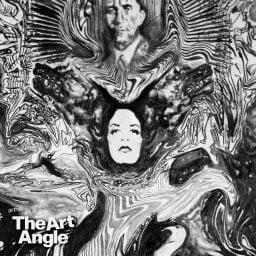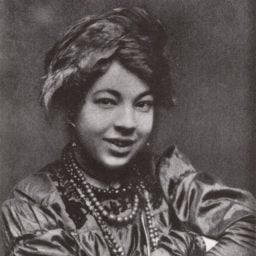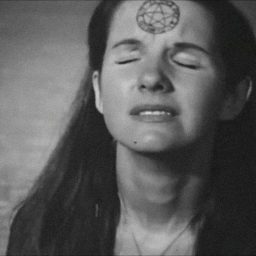On an evening in June, as Canadian wildfires filled the Manhattan sky with smoke, Jeanette Andrews presided over a rapt audience at the National Arts Club. She was performing In Plain Listen, a reimagining of one of the world’s oldest pieces of magic, in which a length of thread is burned by candle to ash and then, miraculously, returned to a single piece of string.
“I was very interested in the history of this piece. It is the simplest, most lovely piece of magic and it is one of the first pieces of magic that was ever written about in the Western world,” Andrews explained. The trick is described in Reginald Scott’s Discoverie of Witchcraft, from 1584, published as a direct result of the Catholic Church’s Inquisition. The book detailed how many superstitions and supposed forms of witchcraft were, in actuality, illusions. “It is one of the first instances in which we can see, in written text, the secret of a piece of magic being talked about openly, detailing how the trick is performed.”
Though not commonly considered as an artistic medium, in the last few years, the art world has begun taking notice of the artist-magician’s performative investigations. In Plain Listen, for instance, was commissioned by Houston’s Mitchell Center for the Arts, which supports performance works. Similarly, the Museum of Contemporary Art Chicago commissioned Andrews’s 2020 work Invisible Museums of the Unseen—a GPS-based, user-activated audio work in which participants’ movements activated an invisible museum and a fictitious audio museum guide. This work was subsequently reimagined for the Quebec City Biennale last year. Andrews was also recently named a National Arts Club Fellow for 2024.
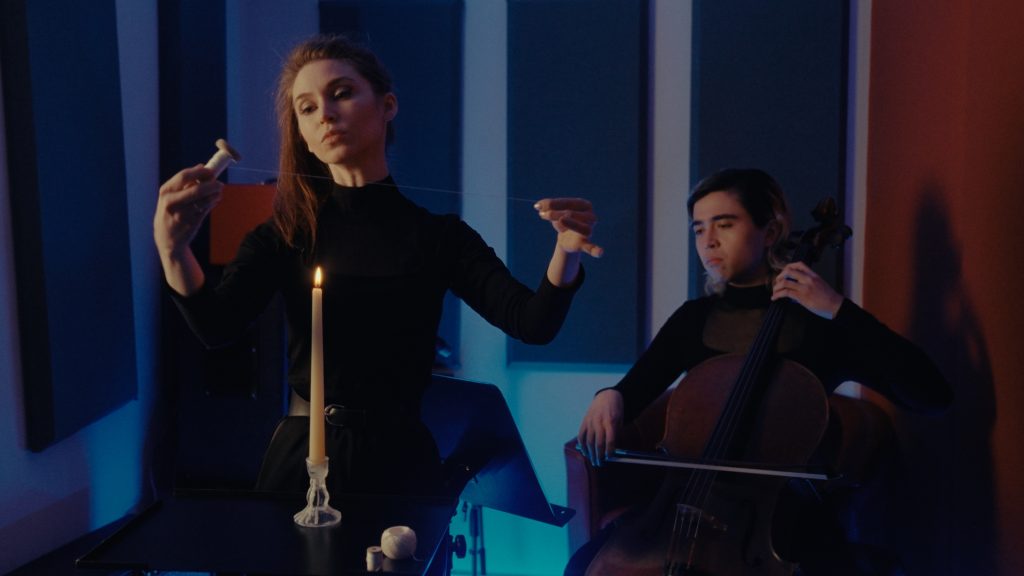
Jeanette Andrews performing In Plain Listen (2023).
Andrews enacted this centuries-old trick at the National Arts Club in New York to dazzling effect, but for those familiar with her work, the act was more than one of merely mesmerizing the eyes. She was letting her audience in on the secret. As she performed, a cellist played out, in a musical Morse code, the directions for enacting the trick. Interventions such as this have come to define Andrews’s avant-garde approach to magic, transforming it into performance art.
The 33-year-old illusionist is determined to bring magic back to an elevated sphere. “In the 1800s, going to a magic performance held the same esteem as the ballet,” she explained, although she acknowledges the difficulties. “Part of the reason that magic is nearly impossible to accurately document in any way is that it exists in the filled-in gaps of psychological or cognitive processes in the mind of the viewer,” Andrews added, noting similarities to ephemeral artworks by artists such as Chris Burden or Trisha Brown.
Carving out this unique niche between illusionist and artist has been a lifelong development. Andrews’s interest in magic sparked at just four years old, after she saw a video of the tiger-loving magic duo Siegfried & Roy. Her parents then gifted her a magic kit for Christmas. “I did a magic performance for my preschool class,” she recalled. Subsequently working her way through all the children’s magic books at her local Chicago library, she was enrolled in lessons with a local magician—the great-nephew of America’s most successful vaudeville illusionist, Ralph Beck. “I started at five years old. In lieu of piano lessons, I did magic lessons,” she said.
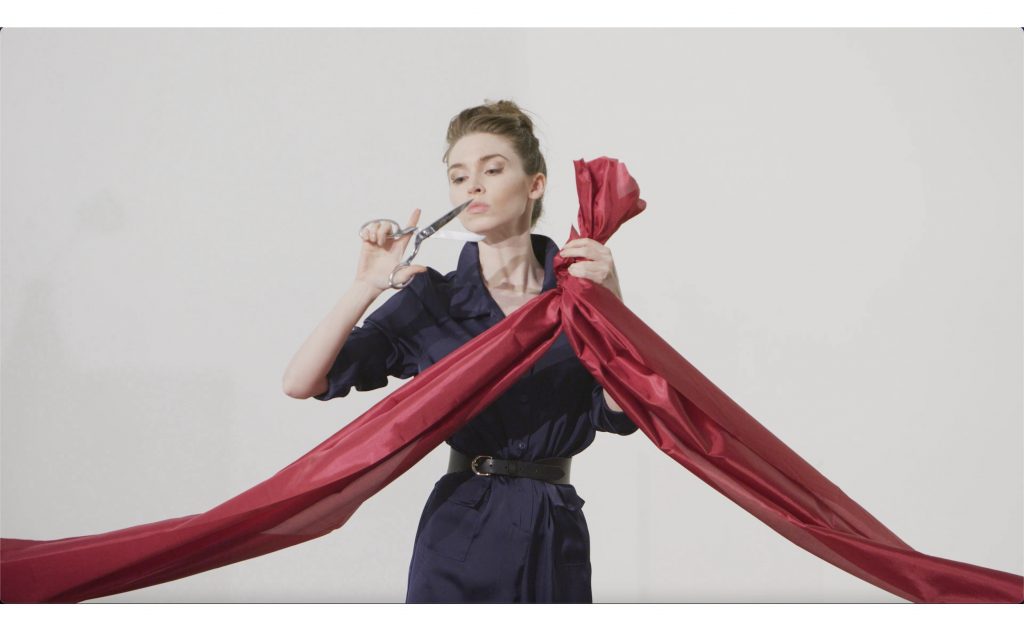
A performance still of Taken by Artificial Surprise. Photo: Derrick Belcham.
In adolescence, however, Andrews’s interest in magic became more complex. “I met the L.A.-based magician Arthur Trace, who is one of my mentors, who made a passing comment to me that magic could be used to express other ideas,” she said. Andrews soon began to use the form to delve into history, philosophy, and art.
“I’m trained as a technical sleight-of-hand magician, but about 10 or 15 years ago, I began to recontextualize my work in the contemporary art world,” she noted. “For most of my life, I have been fascinated with how secret information gets shared down these lineages and archaic information is kept within closed loops of people.”
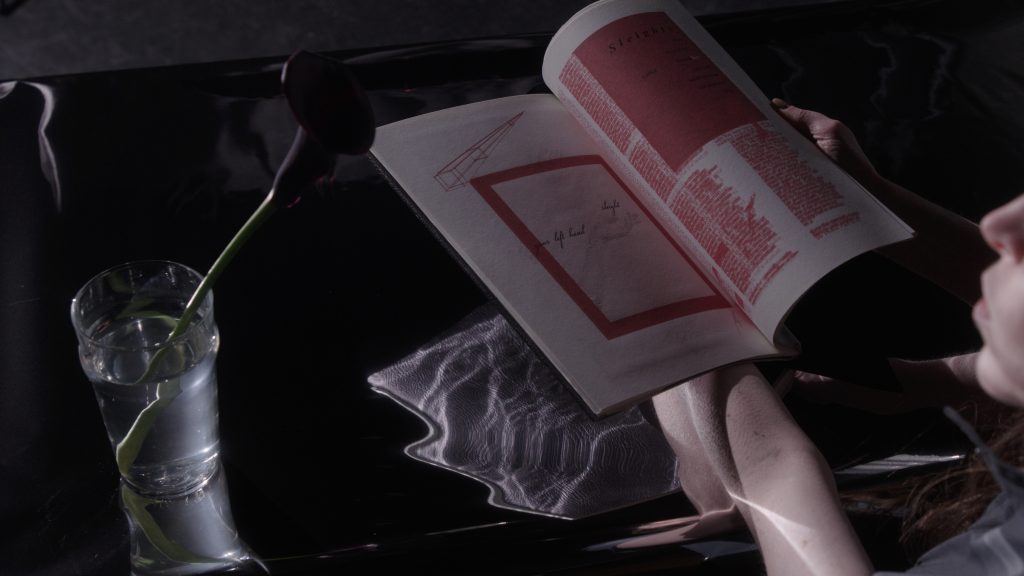
Still from The Attention by Jeanette Andrews. Photo: courtesy of Derrick Belcham.
In recent weeks, the artist has been putting the finishing touches on a new institutional commission—two works for “Smoke and Mirrors,” an upcoming exhibition at the Boca Raton Museum of Art in Florida (the exhibition opens on November 18, 2023). Curated by Kathleen Goncharov, this group show will tap into the ways magic, performance, and “magical thinking” permeate today’s culture, and a world which, the museum notes, is “rife with disinformation, conspiracy theories, and ‘alternative’ facts.”
Here, Andrews has taken inspiration from the recently declassified C.I.A. Manual of Trickery and Deception, a Cold War-era guide to the art of illusion given to government agents in the 1950s. Calling her installation magi.cia.n, Andrews has created both a sculptural book, The Manual, and a video work The Attention, which carry viewers into a split world in which nothing is what it appears. “Here you see magic being used for the most nefarious means,” she noted. “A common piece of bar room magic, a sleight of hand, becomes a way to poison people.”
Installed in a tailor-made box, The Manual is a magical book that viewers are invited to flip through. Depending on how one turns its pages, a Spycraft technical manual is revealed. In the accompanying short film, The Attention, Andrews can be seen performing the tricks included in the book, her role as one that transitions between that of a traditional performer and a secret agent.
Andrews sees magic and espionage as manifestations of different forms of secret information, which coupled with numerous rehearsals and split-second timing, produce movements that can only be detected by their effects. “There are similarities between these two different people [a magician and a spy] preparing in solitude, in a very mundane way, to achieve something that is publicly perceived as very glamorous, but in reality reflects the monotonous nature of excruciating attention to detail,” she explained.
In other ways, Andrews sees such works as a foil to the focus on the supernatural that can often be found in the art world today. “I’m the opposite side of that coin,” she said, “There is a tradition of magicians being debunkers and that is the line of thought that I come from. Magic as a form borrows imagery from the occult, but it comes at it in a more much skeptical frame of mind.”
Instead, she hopes her works can encourage people to observe and interact with the world more closely. “Magic explicitly and fundamentally relies on challenging assumptions that we have about objects and the world around us, both making use of these assumptions and then sort of subverting them,” she explained, “I see that as a parallel to visual art. Both magic and art are deeply interested in the world around us and actively invite people to pay attention, to perceive the world in a more engaged way.”
More Trending Stories:
Conservators Find a ‘Monstrous Figure’ Hidden in an 18th-Century Joshua Reynolds Painting
A First-Class Dinner Menu Salvaged From the Titanic Makes Waves at Auction
The Louvre Seeks Donations to Stop an American Museum From Acquiring a French Masterpiece
Meet the Woman Behind ‘Weird Medieval Guys,’ the Internet Hit Mining Odd Art From the Middle Ages
A Golden Rothko Shines at Christie’s as Passion for Abstract Expressionism Endures
Agnes Martin Is the Quiet Star of the New York Sales. Here’s Why $18.7 Million Is Still a Bargain
Mega Collector Joseph Lau Shoots Down Rumors That His Wife Lost Him Billions in Bad Investments






